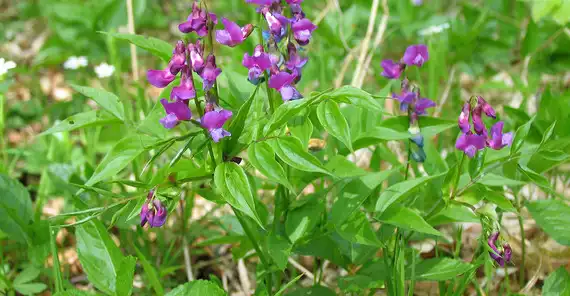Anthropogenic nitrogen deposition and climate change can reduce the competitive advantage of nitrogen-fixing plants, leading to reduced diversity of these plants in a community. Surprisingly, changes in temperature and aridity do not contribute to the observed temporal changes in the diversity of nitrogen-fixing plants, as an international research team including Dr. Thilo Heinken from the University of Potsdam found out. The results of the study have now been published in the journal “Science Advances”.
Biological nitrogen fixation is a fundamental ecosystem service, especially in nutrient-poor soils. As humans introduce additional nitrogen to agricultural land through fertilization, and industry as well as transport contribute to nationwide nitrogen deposition, nitrogen-fixing plants may lose their competitive advantage in the future. These plants include clover, lupins, peas and vetches, as well as alder trees. “In our study, we investigated temporal trends in the diversity of these plants and their relationship to anthropogenic nitrogen deposition, taking into account changes in temperature and aridity,” explains Dr. Thilo Heinken, botanist at the Institute of Biochemistry and Biology.
The international team analyzed data sets from the forestREplot database on the species richness and phylogenetic diversity of forest-floor vegetation in temperate forests in Europe and the USA. Baseline surveys for the selected plots were conducted between 1940 and 1999; last resurveys were conducted between 1995 and 2019. They found that the abundance of nitrogen-fixing plants decreases with increasing nitrogen input, regardless of temperature changes and increasing aridity.
The forestREplot database is an archive of information from sample plots of the herb layer in forests distributed across the temperate zones of Europe and North America. Global trends can be derived from this. Data on Brandenburg’s forests is also fed to this database by Thilo Heinken. “If we understand past changes in the diversity of nitrogen-fixing plants, we can better predict future responses to human nitrogen deposition and climate change,” he summarizes.
Read the paper: Science Advances
Article source: University of Potsdam
Author: Stefanie Mikulla
Image: The spring pea (Lathyrus vernus) is a nitrogen-fixing plant that occurs in the forest undergrowth. Credit: Marcus Schmidt






